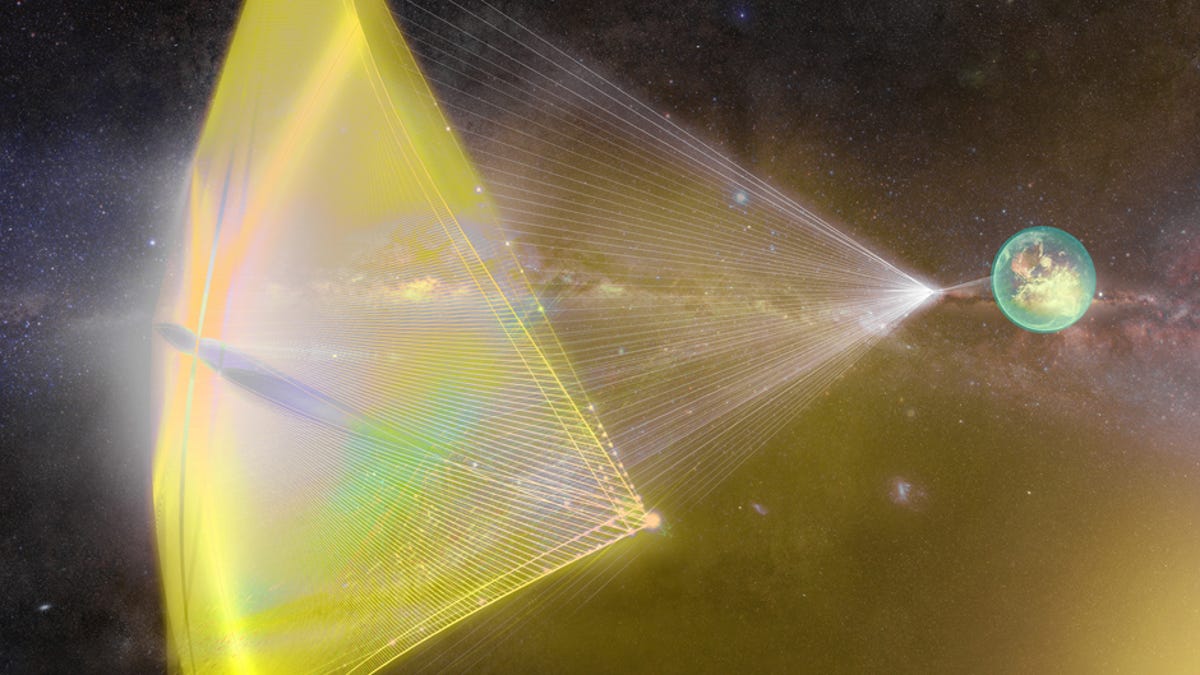Discovery of 'another Earth' revs plan for fly-by of laser-propelled spacecraft
Breakthrough Starshot, the Stephen Hawking and Mark Zuckerberg-backed plan to send spacecraft to our stellar neighbors, has a new target, and it wants you to have the chance to glimpse it up close.
In April, billionaire Yuri Milner and legendary cosmologist Stephen Hawking announced Breakthrough Starshot, an initiative to send a postage stamp-sized spacecraft to the nearby Alpha Centauri star system.
But with Wednesday's historic discovery of Earth-like planet Proxima b around the system's smallest star, Breakthrough Starshot suddenly has a new sense of focus and urgency before it's even gotten off the ground.
"The discovery is likely to energize the project," Abraham Loeb, chair of Harvard University's astronomy department and the Breakthrough Starshot advisory committee said via e-mail on Wednesday. "It provides an obvious target for a flyby mission."
A spacecraft equipped with a camera and various filters, Loeb said, could take color images of the planet and infer whether it's green (harboring life as we know it); blue, with oceans made of water on its surface; or just brown due to dry rock.
"The spacecraft could also measure the mass of the planet and its magnetic field environment," he said.
Launch of Breakthrough Starshot's tiny "nanocrafts" in the direction of Proxima b won't happen this week though. Loeb says 5 to 10 years of feasibility demonstrations still need to be done to prove the viability in a lab of the underlying technology: powerful, ground-based laser beams that would be used to accelerate a lightweight sail attached to the craft to one-fifth the speed of light.
"Most of the capital investment in Starshot will go to the infrastructure of the laser array (beamer), which could potentially launch hundreds of cheap, gram-scale spacecrafts per year," Loeb said. "This will allow us to send a fleet of probes towards Proxima that could relay the images taken back to Earth more easily."
According to Loeb, the chatter on the Starshot advisory board is that it sure would be nice to start beaming those nanocrafts at Proxima b sooner than later. Originally, the goal of the overall initiative was to launch the crafts within two to three decades to begin the 20-year journey. Any photos would then require another four years to make it back to Earth, putting our first close-up glimpse of Proxima b about a half-century away.
Loeb says some other board members are naturally hoping that timeline could be sped up so they'll have a better chance of being able to see the historic images.
But beyond the current generation being able to lay eyes on a potential cousin to Earth, Loeb and Breakthrough Starshot see far greater long-term value in exploring Proxima b.
"The lifetime of Proxima is several trillion years, almost a thousand times longer than the remaining lifetime of the sun," he said. "Hence, a habitable rocky planet around Proxima would be the most natural location to where our civilization could aspire to move after the Sun will die, 5 billion years from now."


